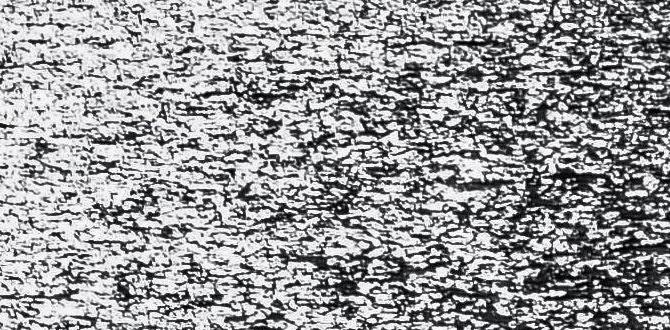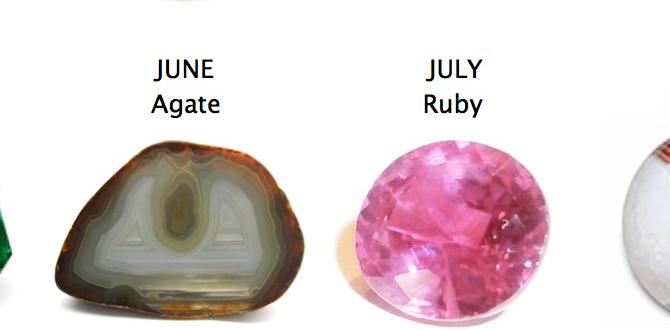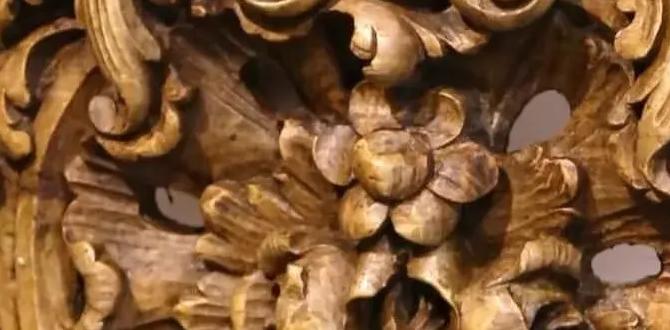3D Rhinestone Cluster Nails: Elevate your manicure with dazzling, dimensional sparkle! Discover genius essential designs perfect for beginners, transforming your nails into glittering works of art with simple techniques and stunning results. Master this trend effortlessly.
Ready to add some serious sparkle to your nails? 3D rhinestone cluster nails are everywhere, and for good reason! They’re glamorous, eye-catching, and surprisingly achievable for anyone wanting to step up their nail game. If you’ve ever felt a little intimidated by intricate nail art, you’re in the right place. We’re going to break down how to create these stunning, dimensional designs so you can rock a salon-worthy look right at home.
This guide is all about making nail art fun and accessible. Forget complicated tools or techniques you can’t replicate. We’ll focus on creating those gorgeous, textured rhinestone clusters that add instant wow-factor. Get ready to play with sparkle, learn some simple tricks, and discover designs that are perfect for beginners. Let’s dive into the dazzling world of 3D rhinestone cluster nails!
What Are 3D Rhinestone Cluster Nails?
Essentially, 3D rhinestone cluster nails are manicures where rhinestones (sparkly, often faceted gems) are applied in groupings, or “clusters,” that create a raised, dimensional effect on the nail surface. Unlike flat nail art stickers or simple single stones, these clusters have a tangible texture and a significant visual impact. They can range from a subtle scattering of tiny gems to a bold, full-coverage statement piece.
The magic of these designs lies in their ability to catch the light from every angle, creating a dazzling, luxurious finish. They’re perfect for special occasions, adding a touch of glamour to an everyday look, or simply expressing your personal style in a bold way. Think of them as tiny, wearable works of art.
Why Are 3D Rhinestone Cluster Nails So Popular?
These sparkling beauties have taken the nail world by storm, and it’s easy to see why! Their popularity stems from a few key factors:
- Instant Glamour: They instantly elevate any manicure, making nails look polished, fancy, and incredibly chic.
- Versatility: From minimalist clusters on accent nails to full-on bedazzled fingers, there’s a style to suit every taste and occasion.
- Dimensional Texture: The 3D effect offers a tactile and visual interest that flat designs can’t match.
- Personalization: You can mix and match stone shapes, sizes, and colors to create a truly unique look.
- Achievability: With the right tools and techniques, creating these clusters is surprisingly doable for beginners.
Essential Tools and Materials for 3D Rhinestone Cluster Nails
Before you start creating, let’s gather your toolkit. Having the right supplies makes the process so much smoother and the results so much better. Don’t worry, most of these are readily available and won’t break the bank!
The Sparkles: Rhinestones!
This is the star of the show! You’ll need a variety of rhinestones. It’s great to have a mix of sizes and shapes to create depth and interest in your clusters.
- Sizes: Small, medium, and large crystals. Look for things like 1.5mm, 2mm, 3mm, and up to 5mm or 6mm for larger statement pieces.
- Shapes: Round (like Swarovski or acrylic rhinestones), teardrop, marquise, and even small flatback pearls can be incorporated.
- Colors: Clear crystals are classic, but don’t shy away from AB (Aurora Borealis) finishes for extra shimmer, or colored stones to match your outfit.
- Materials: While glass rhinestones offer the best sparkle, high-quality acrylic ones are more budget-friendly and still look great.
A good starting point is an assorted pack of clear and AB round rhinestones in various sizes. You can find these at beauty supply stores, craft stores, or online marketplaces.
Adhesives: Sticking Power is Key!
This is crucial for making sure your beautiful crystals stay put. The best adhesive depends on your nail type (natural, gel, acrylic) and how long you want them to last.
- Nail Glue: For natural nails or temporary application. Brush-on or a small tube works well. Ensure it’s specifically for artificial nails for best results.
- Gel Top Coat (No Wipe): Excellent for gel or acrylic nails. You’ll place the rhinestones directly onto the uncured gel, or into a slightly cured gel layer, then cure it under a UV/LED lamp. A “no wipe” top coat is ideal if you’re applying them after the final gel coat has cured, as it provides a sticky surface.
- Specialty Rhinestone Gel/Jelly Gel: These are thicker gel formulas designed specifically to hold larger or heavier rhinestones securely. They offer superior hold compared to regular top coats.
For beginners working with regular polish or gel polish, a good quality nail glue or a slightly thicker gel top coat is your best bet.
Application Tools: Precision and Placement
You need tools to pick up and place those tiny, fiddly gems without smudging your polish or getting glue everywhere.
- Wax Pencil/Rhinstone Picker Tool: These have a slightly sticky, wax-tipped end that picks up rhinestones easily and transfers them to your nail. They are inexpensive and a total game-changer!
- Tweezers: Fine-tipped, pointed tweezers are essential for precise placement, especially for smaller stones or arranging them in specific patterns.
- Small Brush/Dotting Tool: Useful for manipulating stones into place once they’re on the nail or for applying small dots of glue.
Base and Top Coats: Setting the Scene
You can’t go wrong with these staples!
- Nail Polish/Gel Polish: Your chosen color base for your manicure.
- Base Coat: For regular polish, it protects your natural nail and helps polish adhere.
- Top Coat: Essential for sealing your design and adding shine. Opt for a chip-resistant, high-shine formula. For gel, use a UV/LED lamp to cure.
Optional but Helpful:
- Small Silicone Mat or Palette: To pour out rhinestones and make them easier to pick up.
- Alcohol Wipes/Rubbing Alcohol: To clean your nail surface before application, ensuring good adhesion.
Getting Started: A Step-by-Step Guide to 3D Rhinestone Clusters
Let’s get hands-on! This tutorial focuses on creating a beautiful cluster on an accent nail using regular nail polish, but the principles apply to gel polish too. If you’re using gel polish, you’ll need a UV/LED nail lamp and adapt the curing steps.
Step 1: Prepare Your Nails
Start with clean, dry nails. Push back your cuticles and gently buff the surface of your nails to remove any shine. Apply your base coat and let it dry completely. Then, apply your chosen nail polish color. For best results, apply two thin coats and let them dry thoroughly. For gel polish, apply your color coats and cure each layer as directed.
Step 2: Plan Your Cluster Design
This is where the creativity comes in! Decide where you want your cluster to be. It could be near the cuticle, along the free edge, or centered on the nail. Think about the size and shape you want. You can even arrange a few stones first on a surface to get an idea of your cluster’s final look before applying them to the nail.
Step 3: Apply Your Adhesive
For Regular Nail Polish: Apply a small amount of nail glue where you want your cluster to sit. Work in small sections, as glue can dry quickly. Alternatively, apply a generous dot of a clear, quick-drying top coat to the area. This will act as your adhesive. Remember, this method is best for smaller clusters that aren’t too heavy.
For Gel Polish:
- Method A (On Cured Polish): Apply a small amount of a thick gel top coat or specialized rhinestone gel to the nail where you want your cluster. Do not cure yet.
- Method B (On Sticky Layer): If you’ve just cured your final layer of gel polish, you’ll have a sticky inhibition layer. You can apply your rhinestones directly onto this sticky layer, or add a small amount of clear gel top coat to that specific area for extra hold.
Step 4: Pick Up and Place Your Rhinestones
This is the fun part! Use your wax pencil or tweezers to carefully pick up your rhinestones. Start with the largest stones if you are using them, placing them first as anchors for your cluster. Then, use smaller stones to fill in the gaps and build up the dimensional effect. Gently press each stone into the adhesive to secure it.
To create a natural-looking cluster, aim for an irregular shape rather than a perfect circle. Overlapping some stones slightly can enhance the 3D effect. Don’t be afraid to experiment!
Step 5: Cure and Seal (if applicable)
For Regular Nail Polish: Allow the nail glue or top coat to dry completely. This can take several minutes. Once dry, gently test a stone to ensure it’s secure. Then, carefully apply a thin layer of top coat around the edges of your cluster, being careful not to cover the stones themselves if you want them to retain their maximum sparkle. You can also use a fine brush to apply top coat mostly to the nail surface between the stones. Let this dry thoroughly.
For Gel Polish: Once your rhinestones are placed, carefully cure your nails under your UV/LED lamp according to the gel manufacturer’s instructions (usually 30-60 seconds for LED, 1-2 minutes for UV). If you used a sticky inhibition layer or sticky gel, you’ll have a secure design. For extra security and shine, you can carefully apply a thin layer of “no wipe” top coat around the rhinestones, making sure not to flood the stones. Cure again.
Step 6: Clean Up
Wipe away any excess glue or stray polish with an alcohol wipe or a cotton swab dipped in nail polish remover (for regular polish). Be very gentle around the rhinestones.
Genius Essential 3D Rhinestone Cluster Nail Designs
Now that you know the basic technique, let’s explore some amazing design ideas perfect for beginners. These are all about impact with simple execution!
1. The Classic Cuticle Cluster
Description: A beautiful scattering of mixed-size rhinestones concentrated right at the cuticle line, fading slightly down the nail. This placement draws attention to the nail bed and looks sophisticated.
Why it’s great for beginners: It’s a contained design, making it easier to manage application. It often uses just a few sizes of clear or AB crystals for maximum sparkle.
How to achieve it: Apply your base polish and let it dry. Apply your adhesive (nail glue or gel top coat) in a semi-circular shape near your cuticle. Start placing your largest stones first along the outer edge of this shape, then fill in with smaller stones, creating a gentle gradient effect.
Tip: This looks stunning on a nude, pale pink, or classic red manicure.
2. The Diagonal Dazzle
Description: A line of clustered rhinestones runs diagonally across the nail, from one side towards the opposite corner. This elongates the nail and adds a dynamic flair.
Why it’s great for beginners: It’s a linear design that’s easier to guide than a freeform cluster. You can control the width and density.
How to achieve it: Paint your nails and let them dry. Draw a faint diagonal line with a pencil if needed, or just eyeball it. Apply your adhesive along this line. Start with a few medium-sized stones, then add smaller ones on either side to create width, or trail off with single smaller stones for a subtler effect.
Tip: Try using a single color of rhinestones, or two complementary colors for a chic contrast.
3. The French Tip Embellishment
Description: This takes the classic French manicure and adds sparkle. Instead of a plain white tip, you create a cluster of rhinestones along the smile line or a solid rhinestone tip.
Why it’s great for beginners: You’re working with a defined area (the tip). You can either cover the whole tip with a cluster or just place a few strategically along the smile line.
How to achieve it: Complete your French manicure with your base color and white tips (or colored tips). Once the tips are dry (or cured for gel), apply your adhesive along the edge of the tip where you want your rhinestones. Place your stones to create a solid tip or a decorative line. For a full rhinestone tip, you can place stones closely together, slightly overlapping.
Tip: Experiment with colored French tips and matching or contrasting rhinestones for a modern twist.
4. The Single Statement Stone with Accents
Description: One larger statement rhinestone is placed strategically (often as the focal point of a cluster), surrounded by a few smaller accent stones. This is less about a dense cluster and more about a singular, bold element.
Why it’s great for beginners: It focuses your efforts on one main area and uses fewer stones overall, making it less overwhelming.
How to achieve it: After painting your nails, choose your spot for the main stone. Apply a good amount of strong adhesive (especially for larger stones) and place your statement piece. Then, add a few tiny “baby” rhinestones or micro-beads around it to create dimension and support, or to form a simple halo effect.
Tip: Larger rhinestones or charms can serve as your “statement stone.” Ensure your adhesive is robust enough for the weight.
Tips for Long-Lasting Rhinestone Nails
You’ve put in the effort to make your nails sparkle, so you want them to last! Here are some pro tips:
- Prep is Key: Always start with clean, dry, and oil-free nails. This is the foundation for good adhesion.
- Use the Right Adhesive: For maximum longevity, especially with gel or acrylic nails, use a specialized rhinestone gel or a strong builder gel. For regular polish, ensure the glue is fully cured.
- Don’t Overcrowd: While clusters are beautiful, sometimes packing too many stones tightly together can prevent the adhesive from fully bonding all the bases. Ensure there’s good contact.
- Seal Carefully: When using top coat, apply it around the stones, not over them, to preserve their brilliance. If you must cover them slightly for security, a very thin layer of a “no wipe” gel top coat can work.
- Be Gentle: Treat your rhinestone nails with care. Avoid using them for tasks that put direct pressure on the stones, like prying things open.
- Avoid Harsh Chemicals: Strong solvents in cleaning products can break down adhesives. Wear gloves when doing chores!
Troubleshooting Common Rhinestone Nail Issues
Even with the best intentions, sometimes things don’t go perfectly. Here’s how to fix common problems:
- Stones Falling Off: This is usually due to insufficient adhesive or improper application. You can try to re-glue the fallen stone (ensure the nail surface is clean) or add a fresh dot of adhesive and reapply. For gel, you might need to use a stronger bonding agent or rhinestone gel.
- Glue/Top Coat Look Smudged or Cloudy: This often happens if you apply too much, or if the adhesive wasn’t fully dry/cured. For future applications, use smaller amounts and ensure proper drying time. If it’s a top coat issue over regular polish, you might need to carefully remove the affected polish and reapply, or try to clean it gently.
- Rhinestones Losing Sparkle: Some lower-quality rhinestones can dull over time. Ensure you’re using good quality crystals. Also, avoid getting harsh chemicals on them. Sometimes they just need a gentle clean with a soft brush.
- Difficulty Picking Up Small Stones: Ensure your wax pencil or picker tool has a good tip. You can sometimes gently warm the tip (avoid melting!) or use a slightly damp (not wet) tip for better adhesion compared to a dry one.
Table: Rhinestone Application Methods Comparison
Choosing the right adhesive is key to your success. Here’s a quick comparison:
| Method | Best For | Pros | Cons | Durability |
|---|---|---|---|---|
| Nail Glue (Brush-on/Tube) | Regular nail polish, temporary applications |
|



